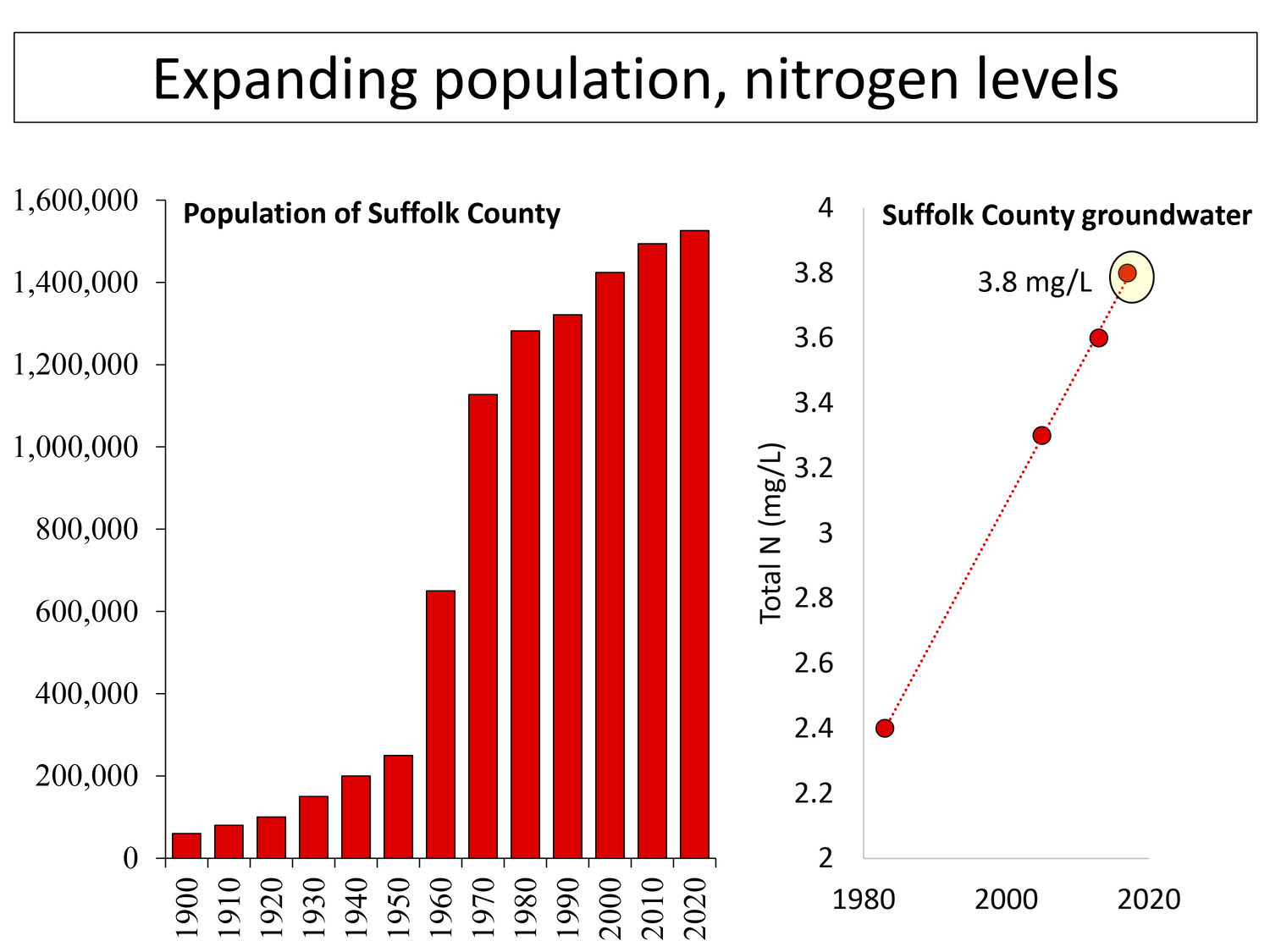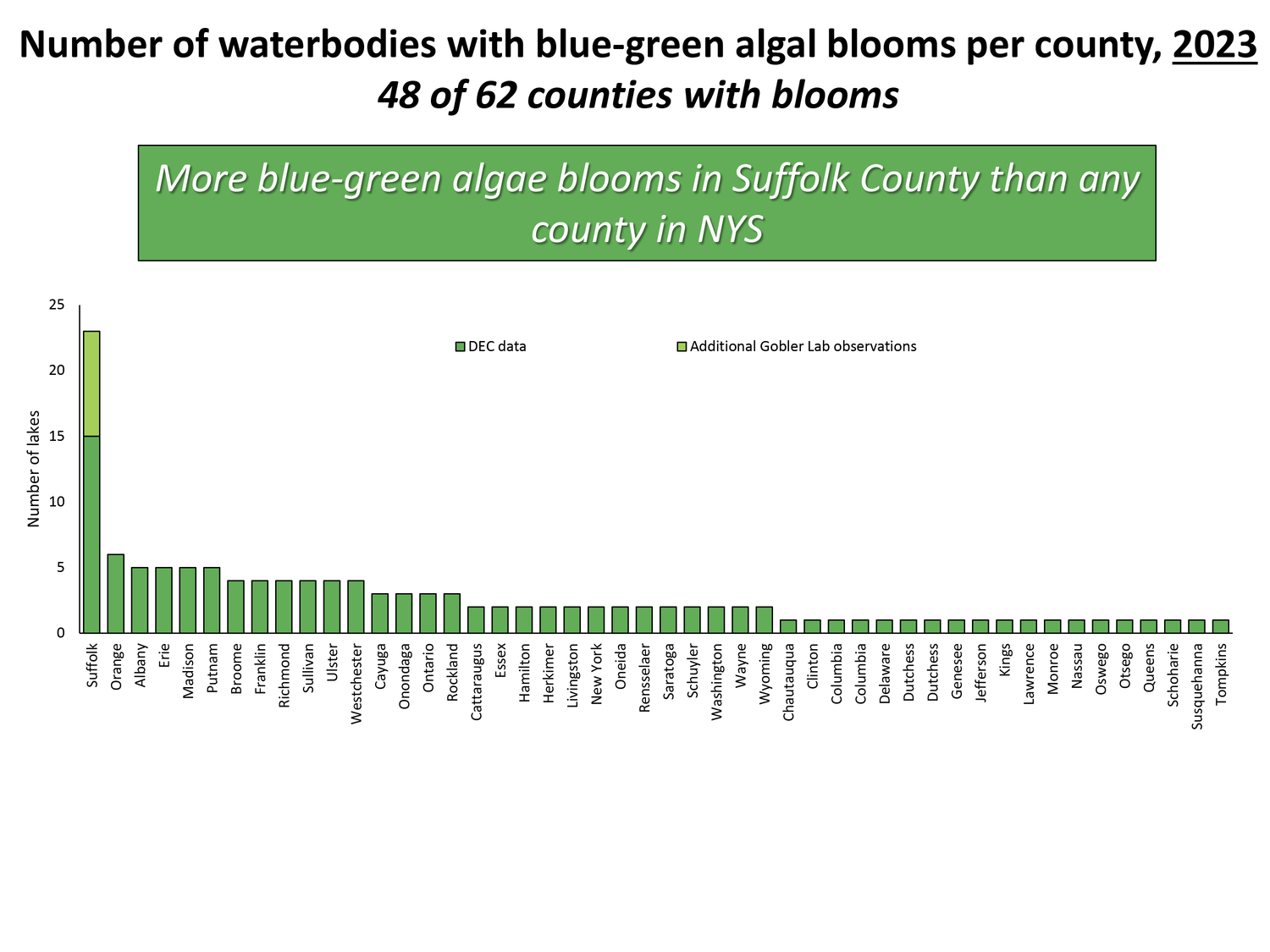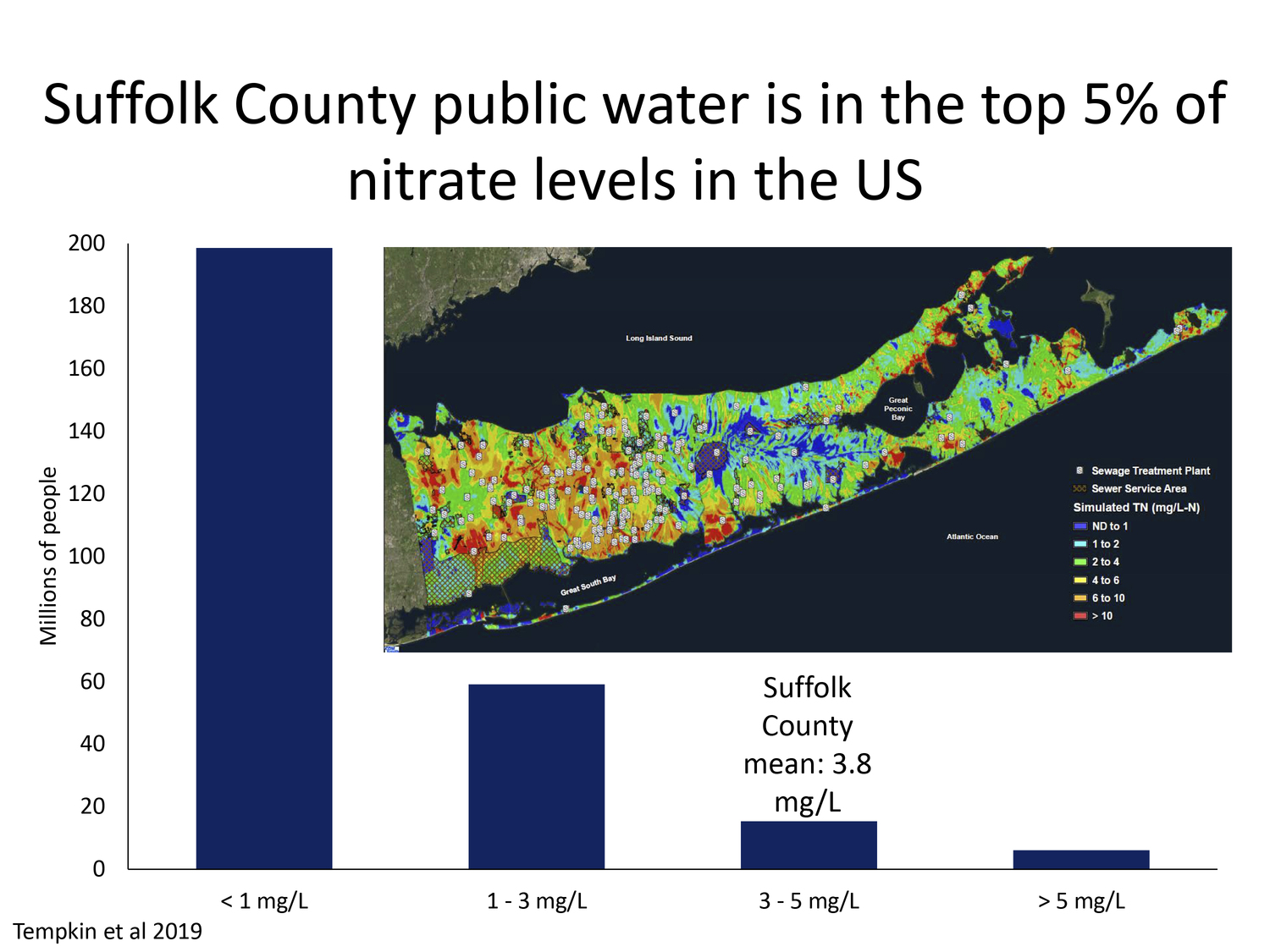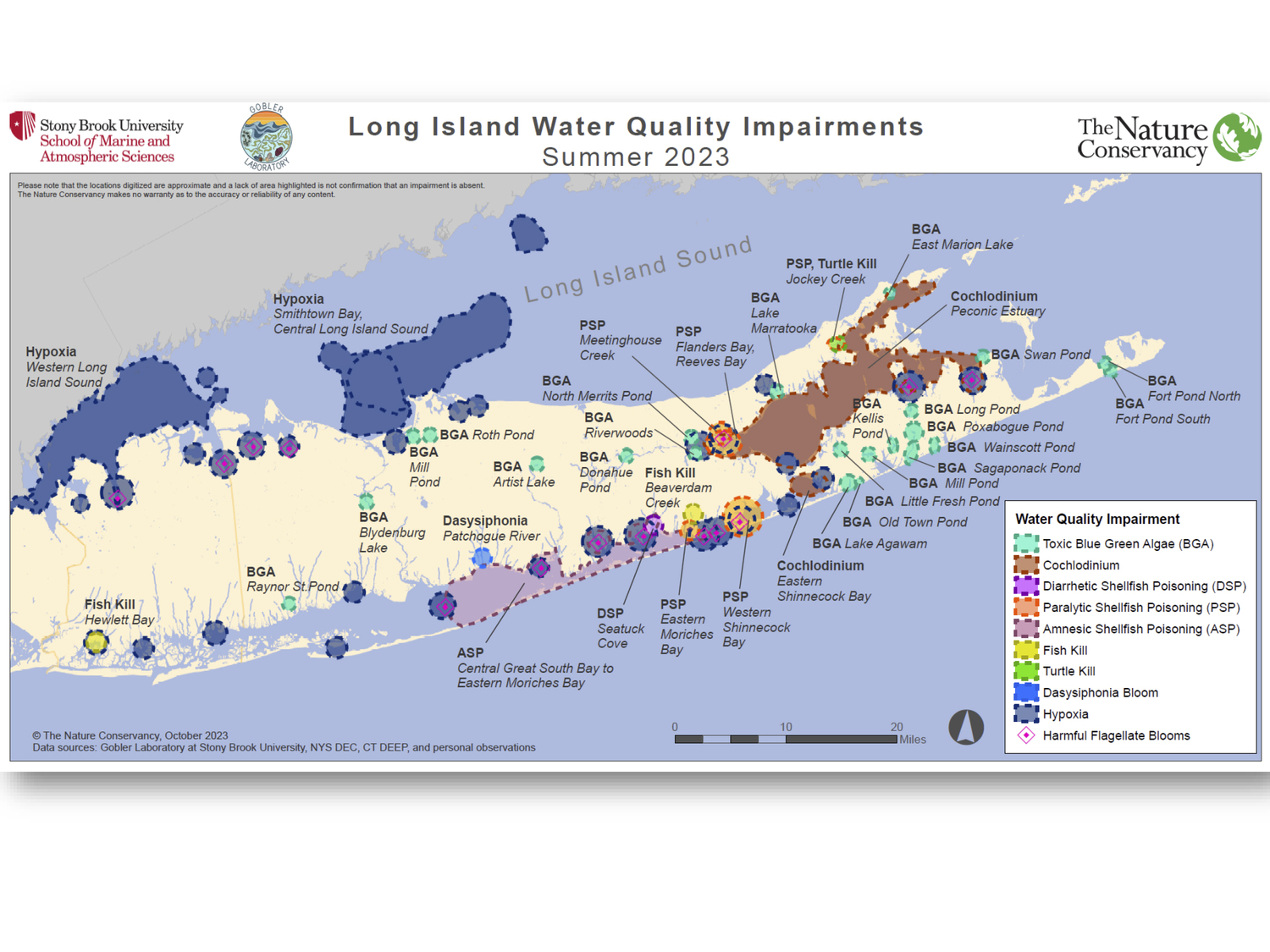
Christopher Gobler Ph.D. presented his annual State of the Bays symposium on water quality issues across Long Island earlier this monthy at Stony Brook University-Southampton. MICHAEL WRIGHT
Nitrogen levels in Suffolk County groundwater have soared with population growth, presenting broad environmental and human health concerns, including cancer risks in humans and developmental issues in newborn babies. COURTESY OF THE GOBLER LAB
Over the decades, as nitrogen levels have climbed and waters have warmed, the number of different harmful algae species blooming in local bays has grown. COURTESY OF THE GOBLER LAB
Suffolk County has more than four times as many water bodies that experience toxic blue green algae blooms than any other of the 62 counties in New York State. COURTESY OF THE GOBLER LAB
Suffolk County's grounwater has some of the highest levels of nitrates in the entire nation. COURTESY OF THE GOBLER LAB
More than two dozen tidal and freshwater bodies on Long Island were stained by harmful algae blooms or starved of oxygen, leading to die-offs of marine species, in 2023.

Christopher Gobler Ph.D. presented his annual State of the Bays symposium on water quality issues across Long Island earlier this monthy at Stony Brook University-Southampton. MICHAEL WRIGHT

Nitrogen levels in Suffolk County groundwater have soared with population growth, presenting broad environmental and human health concerns, including cancer risks in humans and developmental issues in newborn babies. COURTESY OF THE GOBLER LAB

Over the decades, as nitrogen levels have climbed and waters have warmed, the number of different harmful algae species blooming in local bays has grown. COURTESY OF THE GOBLER LAB

Suffolk County has more than four times as many water bodies that experience toxic blue green algae blooms than any other of the 62 counties in New York State. COURTESY OF THE GOBLER LAB

Suffolk County's grounwater has some of the highest levels of nitrates in the entire nation. COURTESY OF THE GOBLER LAB

More than two dozen tidal and freshwater bodies on Long Island were stained by harmful algae blooms or starved of oxygen, leading to die-offs of marine species, in 2023.
We're happy you are enjoying our content. You've read 4 of your 7 free articles this month. Please log in or create an account to continue reading.
Login / Create AccountWe're happy you are enjoying our content. Please subscribe to continue reading.
Subscribe Already a Subscriber


